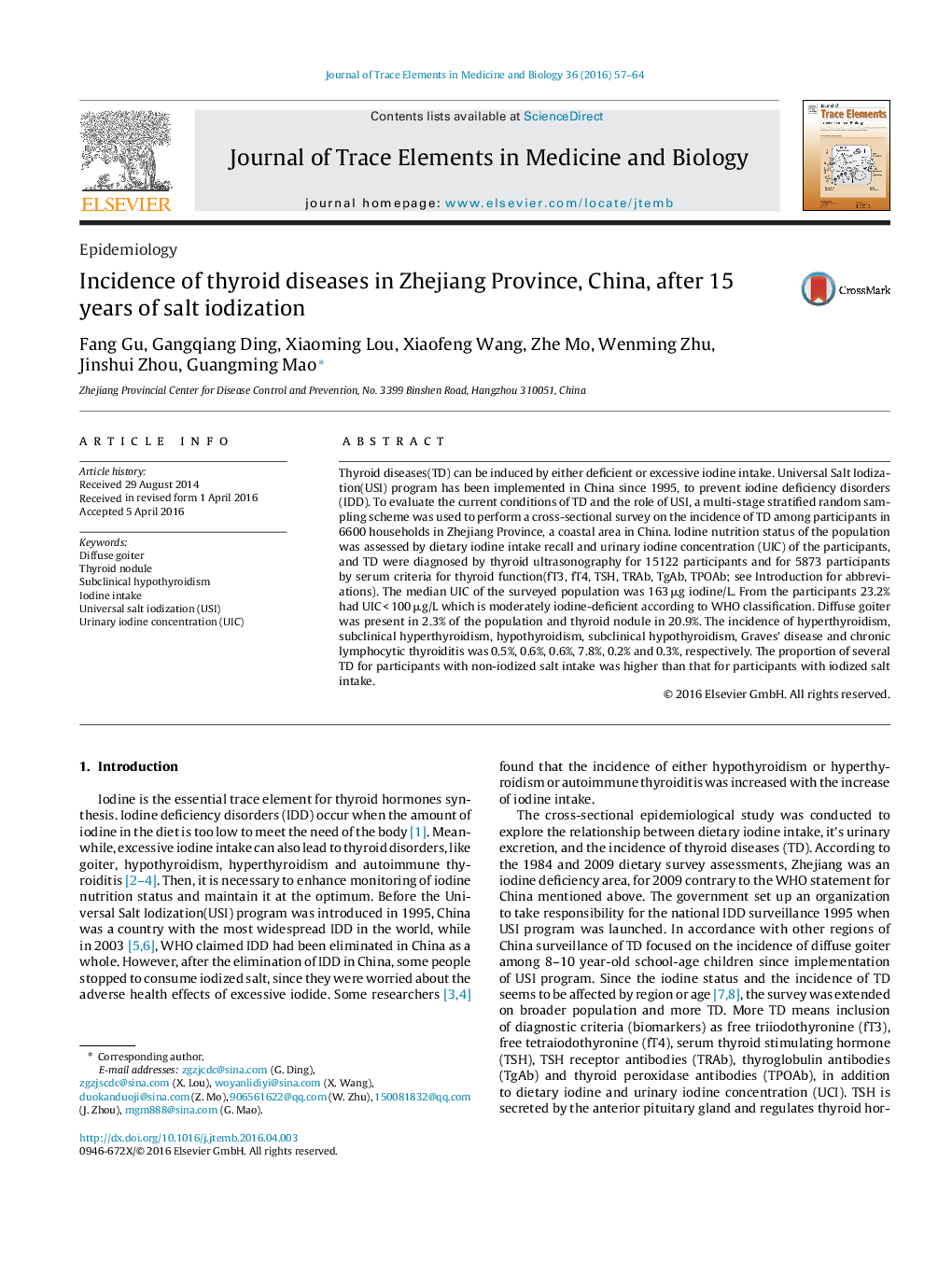| Article ID | Journal | Published Year | Pages | File Type |
|---|---|---|---|---|
| 7639230 | Journal of Trace Elements in Medicine and Biology | 2016 | 8 Pages |
Abstract
Thyroid diseases(TD) can be induced by either deficient or excessive iodine intake. Universal Salt Iodization(USI) program has been implemented in China since 1995, to prevent iodine deficiency disorders (IDD). To evaluate the current conditions of TD and the role of USI, a multi-stage stratified random sampling scheme was used to perform a cross-sectional survey on the incidence of TD among participants in 6600 households in Zhejiang Province, a coastal area in China. Iodine nutrition status of the population was assessed by dietary iodine intake recall and urinary iodine concentration (UIC) of the participants, and TD were diagnosed by thyroid ultrasonography for 15122 participants and for 5873 participants by serum criteria for thyroid function(fT3, fT4, TSH, TRAb, TgAb, TPOAb; see Introduction for abbreviations). The median UIC of the surveyed population was 163 μg iodine/L. From the participants 23.2% had UIC < 100 μg/L which is moderately iodine-deficient according to WHO classification. Diffuse goiter was present in 2.3% of the population and thyroid nodule in 20.9%. The incidence of hyperthyroidism, subclinical hyperthyroidism, hypothyroidism, subclinical hypothyroidism, Graves' disease and chronic lymphocytic thyroiditis was 0.5%, 0.6%, 0.6%, 7.8%, 0.2% and 0.3%, respectively. The proportion of several TD for participants with non-iodized salt intake was higher than that for participants with iodized salt intake.
Related Topics
Physical Sciences and Engineering
Chemistry
Analytical Chemistry
Authors
Fang Gu, Gangqiang Ding, Xiaoming Lou, Xiaofeng Wang, Zhe Mo, Wenming Zhu, Jinshui Zhou, Guangming Mao,
